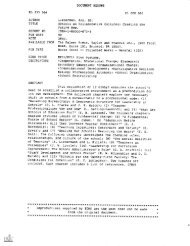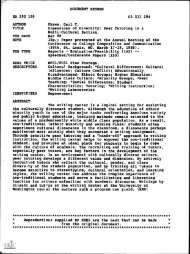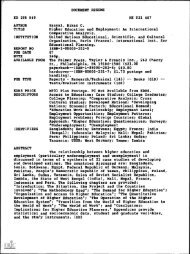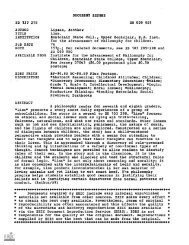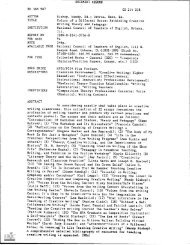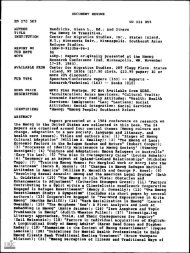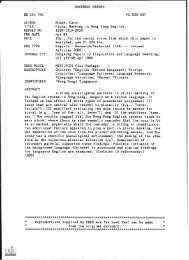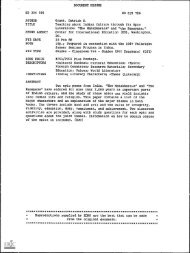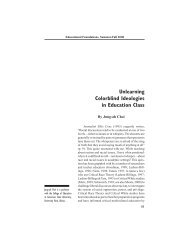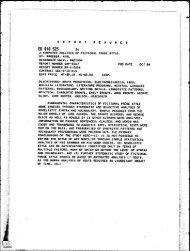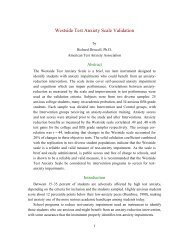Prison Literacy: Implications for Program and Assessment Policy.
Prison Literacy: Implications for Program and Assessment Policy.
Prison Literacy: Implications for Program and Assessment Policy.
You also want an ePaper? Increase the reach of your titles
YUMPU automatically turns print PDFs into web optimized ePapers that Google loves.
certainly recommend that a thorough review of this body of workbe undertaken. As with instruction in reading <strong>for</strong> children,adolescents, young adults, <strong>and</strong> adults, the earlier effectiveinstruction can be given, the more likely society will be able towelcome the recipients as literate, contributing, fulfilled adultcitizens.2. AFRICAN-AMERICANSWith few, little-known exceptions [such as the work of VelmaDolphin Ashley (Revere, 1989), education of African-Americansinside prisons was the equivalent of most education <strong>for</strong> African-Americans outside, until the re<strong>for</strong>ms of the civil rights movementbegan to take effect. The situation today is better in principle, butoften not in practice (Black, 1984), as is pointed out in the title ofone report: "<strong>Prison</strong> Education <strong>Program</strong>s Attempt to Pick Up WhereSociety Failed" (Wiley, 1989a & b).In 1991, America achieved two punishing distinctions: it heldthe record <strong>for</strong> the world's highest rate of incarceration (426prisoners per 100,000 population), <strong>and</strong> the incarceration rate ofAfrican-American males (3,109 per 100,000) was four times that ofSouth Africa (729 per 100,000) where Apardieid was legal.1 Studiesindicate that the disequality of the races extends into the prisonsafter adjudication. While about 50% of inmates in 1990 were non-Caucasian, only 28.7% of the custodial staff <strong>and</strong> 25.3% ofcorrectional personnel overall were non-Caucasian (Camp &Camp, 1990, pp. 49-50). Testing with culturally biased instrumentsmay be another <strong>for</strong>m of racism in correctional education (Besag &Greene, 1985).Many of the studies that point to racial inequities also indicatethat they need not continue (Georgia <strong>Prison</strong>s, 1976; Pass, 1988;Wright, 1989). Other studies make clear that educational programswith African-American inmates can be, <strong>and</strong> often are, bothsuccessful <strong>and</strong> cost-effective. Wiley, <strong>for</strong> example, suggests that it ischeaper to educate illiterate African-American inmates interceptedearly enough in their criminal careers, <strong>and</strong> return them to societyas law-abiding <strong>and</strong> tax-paying citizens, than it is to keep them aspermanent residents at the public's expense (Wiley, 1989).Petersen's detailed plan <strong>for</strong> African-American-orientedcorrectional education is now out-of-date, but it was essentiallysound in theory (Petersen, 1975). Experimental programs ofvarious kinds have demonstrated both the educability of African-American inmates <strong>and</strong> the promise <strong>for</strong> habilitation inherent inproviding them educational opportunities (Martin, 1979a & b). If10 TECHNICAL REPORT T193-I22



